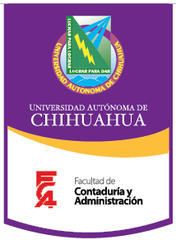
Guide to Visiting Acueducto in Chihuahua Mexico
Publication Date: 01/08/2024
Introduction to Acueducto
The Acueducto de Chihuahua is a historical marvel located in Chihuahua, Mexico, offering a glimpse into the city’s architectural ingenuity and colonial past. Constructed in the 18th century, this aqueduct was designed to supply water from the Chuvíscar River to the growing population and industries of Chihuahua. Spanning approximately 5 kilometers, with 4 kilometers still preserved, the aqueduct is a testament to the engineering prowess of the Spanish during the Viceroyalty of New Spain (Wikiwand). Its impressive arches, built using traditional materials like lime and stone, reflect the influence of Roman engineering principles adapted to the local context (Tiempo).
The Acueducto de Chihuahua is not merely an architectural feat but also a cultural symbol that speaks volumes about the region’s history, socio-economic development, and water management practices over the centuries. The project saw various expansions and modernizations under different governance, including the introduction of metal pipes in the late 19th century, which eventually formed the current water distribution network (Wikipedia). Despite these advancements, the original structure continued to serve the city’s water needs until 1969.
Today, the Acueducto stands as a historical landmark and a popular tourist attraction, drawing visitors who are keen to explore its historical and architectural significance. This guide aims to provide comprehensive information for anyone planning to visit the Acueducto de Chihuahua, covering its rich history, visitor tips, and nearby attractions. Whether you’re a history enthusiast, an architecture aficionado, or a curious traveler, the Acueducto de Chihuahua offers a unique journey through time and engineering excellence (Travelandleisure).
Contents Overview
- Introduction
- Historical Background
- Colonial Era Construction
- Architectural Features
- Expansion and Modifications
- Industrial and Residential Impact
- Key Figures in Construction
- Preservation and Modernization
- Cultural and Historical Significance
- Modern-Day Relevance
- Visitor Information
- Visiting Hours
- Ticket Prices
- Travel Tips
- Nearby Attractions
- Accessibility
- FAQ
- Conclusion
Historical Background
Colonial Era Construction
The Acueducto de Chihuahua dates back to the colonial era, beginning construction on December 12, 1751, under the orders of Viceroy Antonio María de Bucareli y Ursúa, the Conde de Revillagigedo. The primary purpose was to supply the city with water from the Chuvíscar River (Wikiwand).
Architectural Features
The aqueduct spans approximately 5 kilometers, with 4 kilometers still preserved. It includes acequias (irrigation ditches), closed canals, pipes, and 59 arches constructed with lime and stone (Tiempo).
Expansion and Modifications
In 1829, the municipal council approved the expansion and branching of the aqueduct. This included auxiliary transverse acequias to supply city haciendas. The installation of metal pipes began in 1882, forming the current water distribution network. The original aqueduct continued to transport water until 1969 (Wikipedia).
Industrial and Residential Impact
Initially, wooden canoes and pillars transported water, proving insufficient for the city’s needs. The transformation to a masonry system was funded by taxes on gold and silver producers. This allowed the aqueduct to support residential needs, industries, and agriculture (Wikipedia).
Key Figures in Construction
Master builders Cristóbal de Villa and Agustín Guijarro oversaw the construction. The first section was completed by 1768, providing water to the western suburbs. By 1786, the aqueduct reached the Alameda de Santa Rita, now Parque Lerdo (Tiempo).
Preservation and Modernization
Despite advancements in water distribution technology, the original aqueduct structure has been preserved as a historical monument. The transition from acequias and fountains to a modern water treatment and distribution system began in the late 19th century (Wikipedia).
Cultural and Historical Significance
The Acueducto de Chihuahua reflects the city’s colonial history and its evolution. It showcases the ingenuity of colonial engineers and the importance of water management in urban development. The aqueduct remains a symbol of the city’s rich cultural heritage (Mexicoenfotos).
Modern-Day Relevance
Today, the Acueducto de Chihuahua stands as a historical landmark, attracting tourists and history enthusiasts. Its preservation allows visitors to appreciate the engineering skills of the colonial period and understand the historical context of water management in the city (Travelandleisure).
Visitor Information
For those planning to visit the Acueducto de Chihuahua, here are some essential details:
- Visiting Hours: The site is open daily from 9 AM to 6 PM.
- Ticket Prices: Entry is free, but guided tours may have a fee.
- Travel Tips: Wear comfortable shoes and bring water, as the area requires some walking.
- Nearby Attractions: Explore the Centro Histórico, the Metropolitan Cathedral of Chihuahua, and the Palacio de Gobierno.
- Accessibility: The site is accessible to visitors with limited mobility, though some areas may be challenging.
FAQ
Q: What are the visiting hours for the Acueducto de Chihuahua? A: The site is open daily from 9 AM to 6 PM.
Q: Is there an entry fee? A: Entry is free, but guided tours may have a fee.
Q: Are there guided tours available? A: Yes, guided tours are available and provide in-depth historical insights.
Q: What nearby attractions can I visit? A: Nearby attractions include the Catedral de Chihuahua, Museo Casa Chihuahua, and Plaza de Armas.
Q: What should I bring when visiting the aqueduct? A: Wear comfortable shoes, bring water, and sun protection, especially during the warmer months.
Conclusion
The Acueducto de Chihuahua is a remarkable example of colonial engineering and a significant part of the city’s historical and cultural heritage. Its construction, expansion, and preservation reflect the city’s growth and adaptation over the centuries. Visitors to Chihuahua can gain a deeper understanding of the city’s past and its continuous evolution by exploring this historical landmark and its surrounding attractions (Travelandleisure).
Source Citations
- Wikiwand. (n.d.). Acueducto de Chihuahua. Retrieved from https://www.wikiwand.com/es/Acueducto_de_Chihuahua
- Tiempo. (n.d.). Chihuahua Acueducto Estructura. Retrieved from https://www.tiempo.com.mx/noticia/chihuahua_acueducto_estructura_anos_historia_construccion_objetivo/
- Wikipedia. (n.d.). Acueducto de Chihuahua. Retrieved from https://es.wikipedia.org/wiki/Acueducto_de_Chihuahua
- Travelandleisure. (n.d.). All About Chihuahua, Mexico. Retrieved from https://www.travelandleisureasia.com/global/destinations/north-america/all-bout-chihuahua-mexico/
- Mexicoenfotos. (n.d.). Acueducto de Chihuahua. Retrieved from https://www.mexicoenfotos.com/turismo/acueducto-de-chihuahua-obra-hidrulica-del-virreinato/72472





